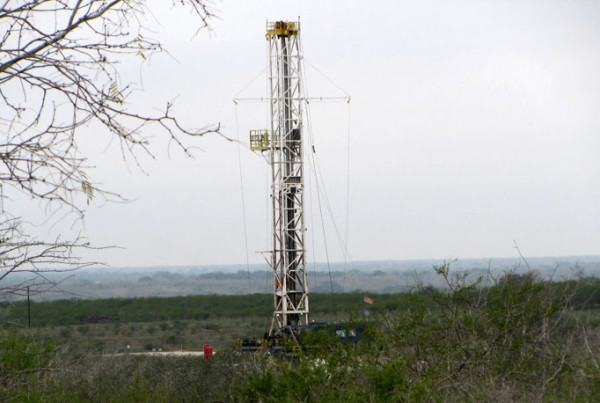Texas oyster reefs have taken a beating over the past several years. It started with Hurricane Ike in 2008, followed by drought and then flooding. Now the Texas Parks and Wildlife Commission is making some changes to how oysters are fished in Texas waters.
Texas Parks and Wildlife Department field technicians dump a dredge full of oysters onto a boat in West Matagorda Bay. They’re counting dead and live oysters and looking for “spat” – or baby oysters less than an inch long.
Wildlife department technician Caren Collins says the baby oysters are especially important.
“The more spat you’re going to have on your reef the healthier … and you’re going to have a regrowth of population,” Collins says.
Collins is part of one of many teams of wildlife department technicians that survey oyster reefs up and down the state’s coast. These surveys help the department understand the health of the oyster crop and make decisions about when to close unhealthy reefs to fishing.
In an effort to help damaged reefs recover, the Texas Parks and Wildlife Commission is reducing the catch limit from 50 sacks of oysters per day to 40. It’s also closing harvesting on Sundays this season.
The wildlife department says the new regulations shouldn’t mean we’ll see fewer Texas oysters for sale or cut into the bottom line of the commercial fishing industry. That’s because while the oyster season is about 180 days long, most of the commercial oystering fleet hang up their dredges after just 100 days – when collecting what’s left is no longer economical. And during the 2014-2015 season, boats pulled in an average of 23 sacks of oysters per day, well below the new catch limit.
Lance Robinson is deputy director of the wildlife department’s Coastal Fisheries Division.
“The thought is if you reduce the sack limit, and you remove one day from the fishing season because they’re already harvesting so far below what is allowed, we believe what will happen is it will just adjust,” Robinson says.
The new rules, which take effect Nov. 1, are expected to extend the harvest of oysters further into the season, when the mollusks have bulked up in preparation for spawning. But Robinson says closing troubled reefs to fishing will be the biggest help to oyster populations.
The department is tipped off to unhealthy reefs in three ways: from the regular surveys it conducts, from law enforcement catching fishermen and women with undersized oysters, and from the fishermen and women themselves.
In any case, Robinson says wildlife department technicians follow up with more intense sampling.
“When we make a proposal for a change, we have to back it up with hard science data,” Robinson says. “Our data has to be defendable because in the past we’ve been sued over decisions that we have made, and we try to make our decisions on the best available science.”
Out on Matagorda Bay Palacios, Collins explains what it’s like to gather this data so the department can make informed decisions.
“I volunteered with our office in Rockport some years ago – that’s where I got the TPWD bite that I want to do this,” Collins says. “That was my first time. And it was exciting stuff. It still is.”
So what about it surprises her or has made her think differently about oysters?
“I just like seeing what different reefs have to offer – sometimes you get more in one reef than you do in another,” Collins says. “And it’s surprising to see how that can change from season to season, especially after the commercial people get ahold of it. The exciting part of it is, when oyster season is open, you could be on a reef sampling with 100 other oyster boats. And they’re all moving around you in a circle and so you’re stuck in the middle. That’s always entertaining and frightening at the same time because at any moment someone could circle around you. But it’s interesting to watch”
















